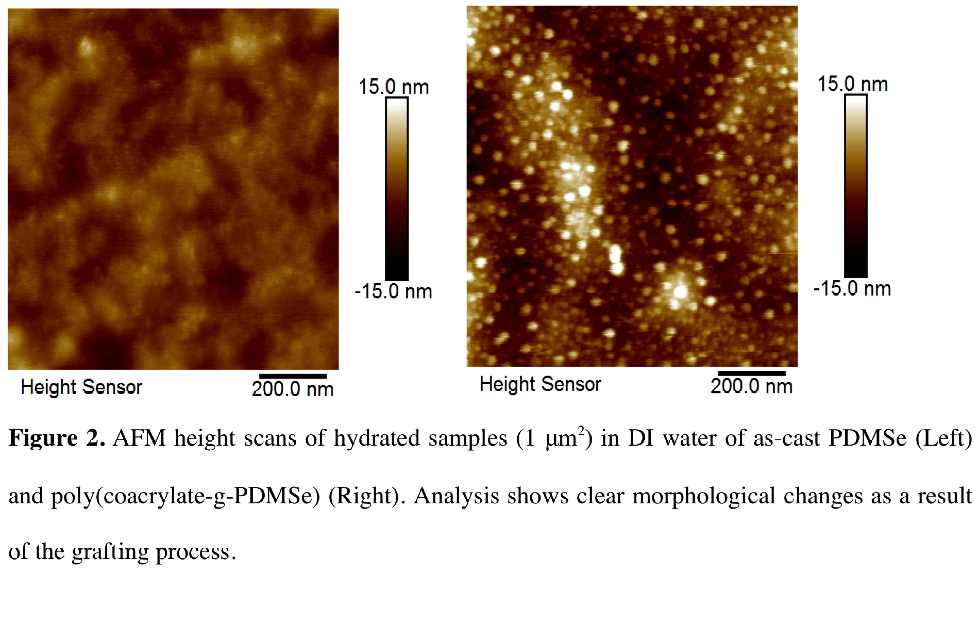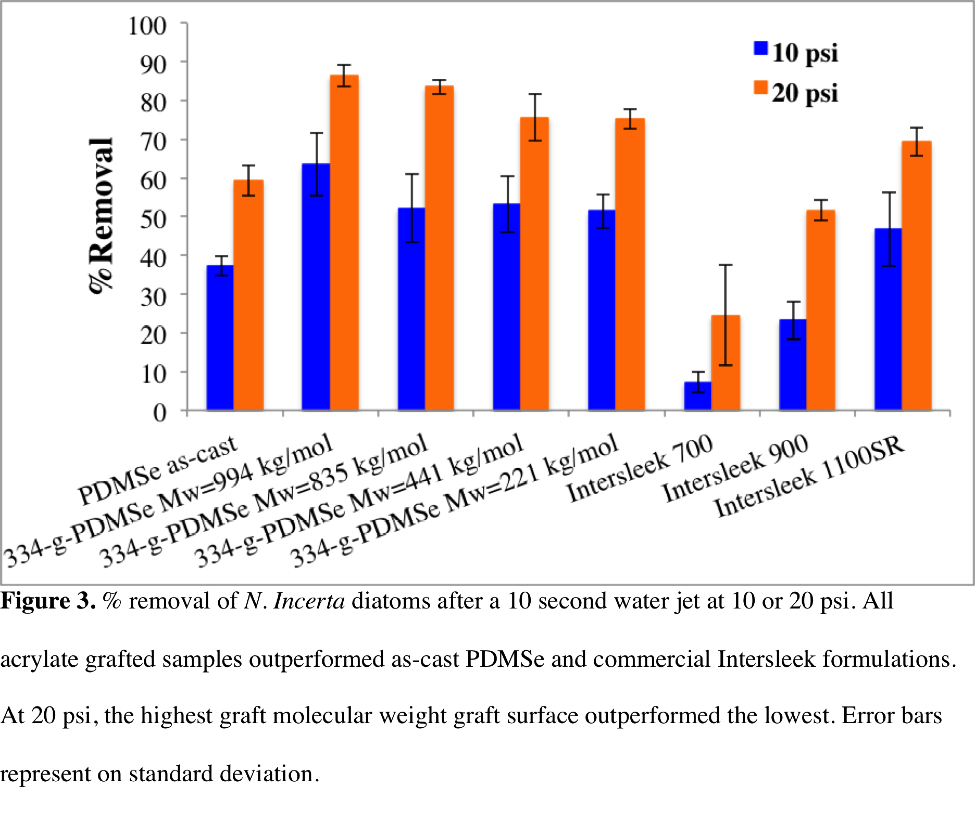Introduction: Biofouling of surfaces in liquid environments by a variety of marine organisms, cells, and proteins affect various sectors such as maritime shipping, water treatment plants, and medical devices. We have recently published our surface energetics attachment model that is predictive for anti-fouling based upon surface energy arguments coupled to surface microtopographies[1]. We propose that by controlling the surface energy dynamics of a surface, we should be able to induce the anti-fouling performance desired in marine applications. It is hypothesized that acrylate copolymers composed of acrylic acid, acrylamide, and methyl acrylate combined with engineered microtopographies will create effective antifouling surfaces because of the amphiphilic and charged nature of the chosen monomers, and furthermore, the surface properties can be tailored by controlling the molecular weight of the grafts and the underlying microtopography.
Materials and Methods: Random copolymers of acrylic acid, acrylamide, and methyl acrylate were chemically grafted to plasma treated poly(dimethyl siloxane) elastomer (PDMSe) (Xiameter® Dow Corning) surfaces through the use of 3-mercaptopropyl trimethoxysilane as a silane coupling agent in conjunction with thiol chain transfer and surface initiated radical chain growth polymerization in water. Molecular weight was controlled with the addition of thioglycolic acid from 0-20 mM. Grafted surfaces were either smooth or patterned containing the SharkletTM engineered topography. Surface grafting was confirmed with contact angle, XPS, and AFM analysis. GPC of bulk polymer was used to estimate surface graft molecular weight. The biofouling response was investigated by analyzing the initial attachment density and %removal due to a water jet of the Ulva linza zoospore, Navicula Incerta diatom, and C. Lytica bacteria.
Results and Discussion: Graft molecular weight was varied two orders of magnitude from 1,050 to 10 kg/mol with a corresponding change in water contact angle from ~62-44°. XPS analysis revealed the presence of C=O and C-N bonds present from the grafts with increasing signal corresponding to increasing molecular weight. AFM revealed the presence of 10-30 nm surface grafts hierarchically imposed on the Sharklet microtopography. Attachment density data for Ulva linza revealed a reduction compared to smooth as-cast PDMSe between 80-90% with no statistically significant effect of graft molecular weight or the addition of the SharkletTM topography. However, high molecular weight grafts caused 86% of attached N. Incerta diatoms to be removed by exposure to a 20 psi water jet while as-cast PDMSE only provided 59% removal. Low molecular weight grafts provided a statistically significant decrease in % removal of only 75%.



Conclusions: The grafting process developed was successful at creating random copolymers composed of acrylic acid, acrylamide, and methyl acrylate to PDMSe surfaces with tailorable molecular weight, nanoroughness, and surface energy. The acrylate surface grafts exhibited strong antifouling potential with the zoospore Ulva linza but the hypothesized effect of graft molecular weight and engineered surface microtopography was not realized. All acrylate grafts studied outperformed the leading Intersleek marine fouling release coatings with respect to diatom removal, and the higher molecular weight grafts caused an increase in % removal compared to the low molecular weight.
References:
[1] Decker et al. Engineered Antifouling Microtopographies: An Energetic Model That Predicts Cell Attachment, Langmuir 2013, 29, pp.13023-13030